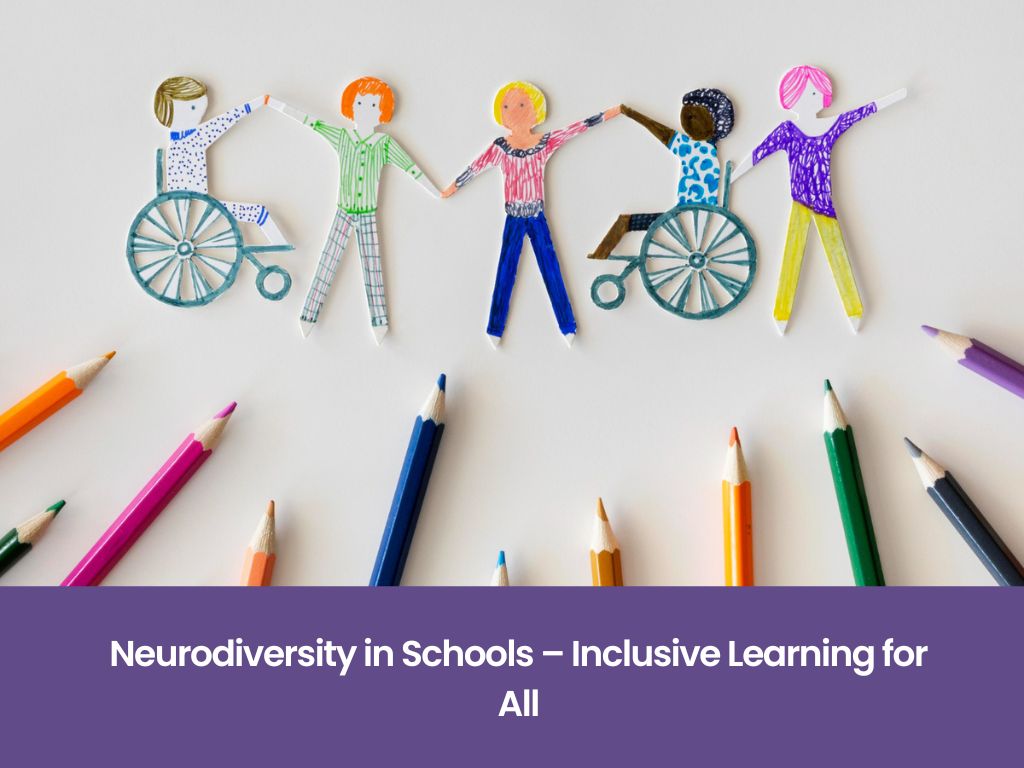Neurodiversity in Schools – Inclusive Learning for All
posted on Aug 18, 2025
Discover how schools are embracing neurodiversity by redesigning classrooms to support all learners, including those with ADHD, autism, and dyslexia.

Introduction
In today’s evolving educational landscape, one concept that is gaining significant attention is neurodiversity. This approach recognizes and values the unique ways in which students think, learn, and interact with the world. From children with ADHD and autism to those with dyslexia and other cognitive differences, neurodiversity encourages schools to foster environments that support diverse learning needs—not just accommodate them.
As the understanding of brain-based differences becomes more mainstream, forward-thinking institutions like Bgs Vijnatham School, one of Best School in Greater Noida West, are taking bold steps to create inclusive classrooms where every learner can thrive.
What is Neurodiversity?
Neurodiversity refers to the natural variation in how human brains function. It challenges the notion of a "normal" brain and includes conditions like:
- Autism Spectrum Disorder (ASD)
- Attention-Deficit/Hyperactivity Disorder (ADHD)
- Dyslexia
- Dyspraxia
- Dyscalculia
- Nonverbal Learning Disabilities
Rather than treating these as deficits, neurodiversity emphasizes that these differences bring unique strengths and should be embraced, not stigmatized.
Why Inclusive Classrooms Matter
Inclusion isn’t just about physical presence; it’s about meaningful participation. Inclusive classrooms provide a learning environment where neurodiverse students are:
- Valued for their contributions
- Supported through differentiated instruction
- Encouraged to build on their strengths
- Given equal opportunities to succeed
Inclusive education benefits all students by promoting empathy, collaboration, and a broader understanding of human differences.
Strategies to Support Neurodiverse Learners
1. Differentiated Instruction
Teachers can adapt their teaching methods to cater to various learning styles—visual, auditory, kinesthetic, or verbal. This ensures that neurodiverse students have multiple pathways to understand and retain concepts.
2. Flexible Assessments
Offering alternatives to traditional tests, such as oral presentations, project work, or visual assignments, can help neurodiverse learners demonstrate their knowledge more effectively.
3. Sensory-Friendly Environments
For students with sensory sensitivities, minimizing distractions—like harsh lighting or excessive noise—can greatly improve focus and comfort in the classroom.
4. Technology Integration
Assistive tools like speech-to-text software, audiobooks, and mind-mapping apps can help students with dyslexia or processing difficulties better engage with content.
5. Teacher Training
Ongoing professional development is crucial. Teachers must be equipped with the skills and awareness needed to recognize neurodiverse traits and respond with compassion and competence.
The Role of School Leadership
Administrators and school leaders play a pivotal role in promoting neurodiversity. Their commitment to inclusive values reflects in:
- School policies that prevent discrimination
- Investment in staff training and classroom resources
- Collaboration with parents and specialists
- Student support teams to assess and guide learning interventions
One shining example of such leadership is Bgs Vijnatham School, one of Best School in Noida extension, where student-centric innovation and inclusive policies go hand in hand to build a nurturing ecosystem for all learners.
Parent and Community Involvement
When it comes to neurodiversity, collaboration with parents is key. They offer invaluable insights into their child's needs, helping educators create individualized plans that work. Community partnerships, too, can provide resources like occupational therapy, counseling, or after-school support programs.
Success Stories and Positive Outcomes
When neurodiverse students are supported effectively, the results are inspiring. They become more confident, participate actively, and showcase talents that may have otherwise gone unnoticed. Schools that prioritize inclusion often see improved academic results, reduced behavioral issues, and greater emotional well-being among students.
Conclusion: Towards a Truly Inclusive Future
Embracing neurodiversity is not just an educational trend—it’s a shift toward a more empathetic, just, and effective learning system. Schools must recognize that each student brings something valuable to the table. By rethinking traditional models and creating flexible, understanding environments, we can ensure that all children, regardless of how they learn, are given the opportunity to succeed.
The journey toward inclusion may require effort and change, but the result—a school where every learner feels seen, respected, and empowered—is well worth it.